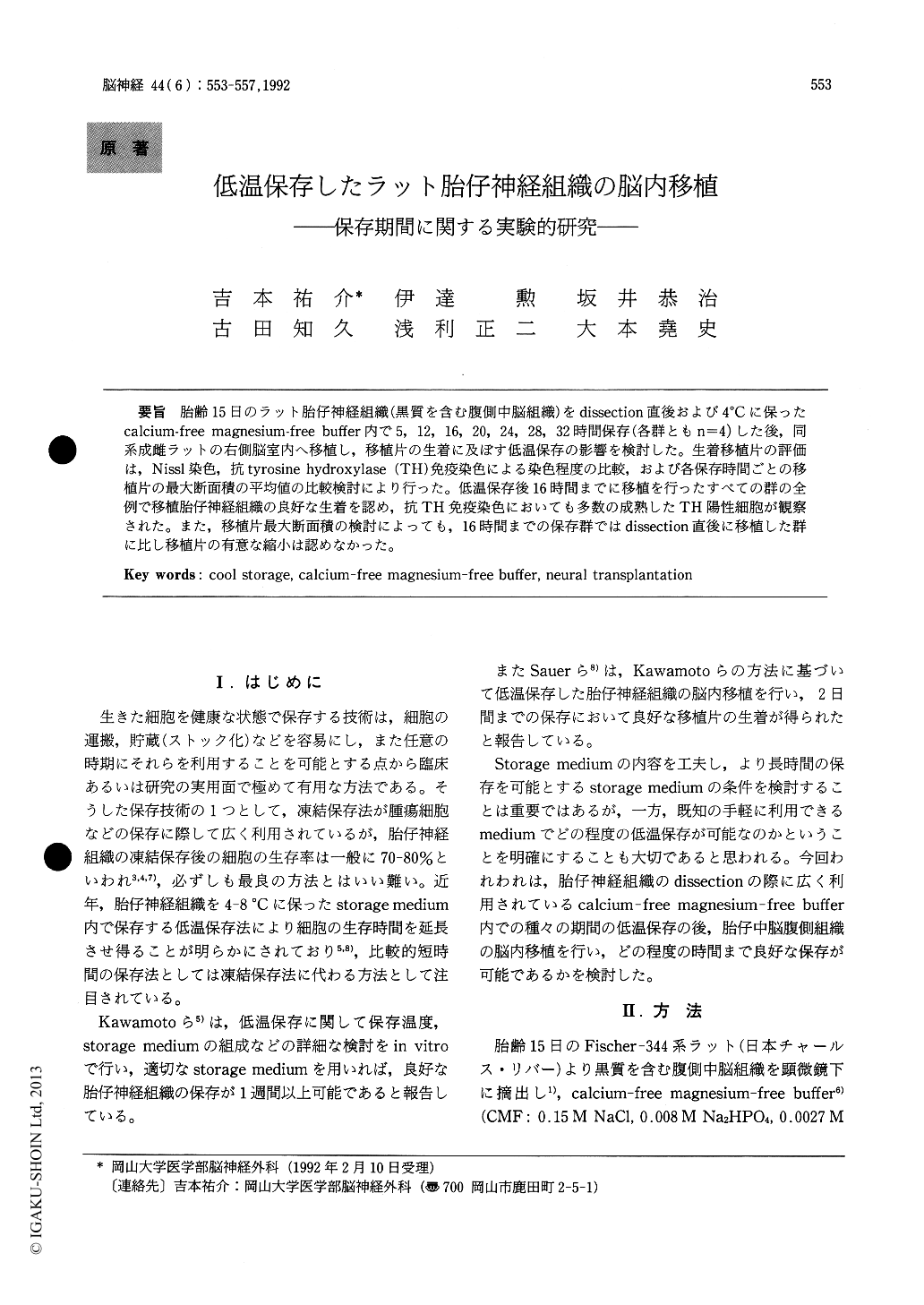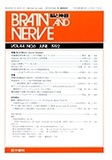Japanese
English
- 有料閲覧
- Abstract 文献概要
- 1ページ目 Look Inside
胎齢15日のラット胎仔神経組織(黒質を含む腹側中脳組織)をdissection直後および4℃に保ったcalcium-free magnesium-free buffer内で5,12,16,20,24,28,32時間保存(各群ともn=4)した後,同系成雌ラットの右側脳室内へ移植し,移植片の生着に及ぼす低温保存の影響を検討した。生着移植片の評価は,Nissl染色,抗tyrosine hydroxylase(TH)免疫染色による染色程度の比較,および各保存時間ごとの移植片の最大断面積の平均値の比較検討により行った。低温保存後16時間までに移植を行ったすべての群の全例で移植胎仔神経組織の良好な生着を認め,抗TH免疫染色においても多数の成熟したTH陽性細胞が観察された。また,移植片最大断面積の検討によっても,16時間までの保存群ではdissection直後に移植した群に比し移植片の有意な縮小は認めなかった。
The availability, storage and transportation of donor tissue are major practical problems associat-ed with the potential use of grafted neural cell replacements in neurodegenerative diseases. The capacity to collect and maintain viable fetal neural tissue would facilitate possible clinical applications, and provide opportunities to study various neural diseases. In the present study, we examined the effect of cool storage on the survivability of intraventricular rat fetal ventral mesencephalic grafts (gestational days 15) . In all experiments, fetal ventral mesencephalons were dissected out under a dissecting microscope in calcium-free mag-nesium-free buffer (CMF : 0.15 M NaCl, 0.008 M Na2HPO4, 0.0027 M KCl, 0.0015 M KHPO4, 0.026 M NaHCO3, with 0.1 % glucose, 100μg/ml streptomy-cin, 2.51.μg/ml fungizone). Fetal mesencephalic tis-sue was grafted into the lateral ventricle following pregraft refrigeration in calcium-free magnesium-free buffer at 4 ℃. Fetal mesencephalic tissue was hibernated for 5, 12, 16, 20, 24, 28, 32 hours (group A, B, C, D, E, F and G, respectively). As a control group, fetal mesencephalic tissue was grafted into the lateral ventricle immediately after dissection. Grafted fetal mesencephalic tissue which had been hibernated for 16 hours or less survived well. There were no significant decreases in the size of graftsamong group A, B, C and the control group. In group A, B, C and the control group, clusters of TH -positive neurons and dense networks of neuritic profiles within the grafts provided a morphological appearance reminiscent of the dendritic bundles that characterize the zone reticulate of the sub-stantia nigra in situ. On the other hand, grafts in groups D, E, F and G significantly reduced in size compared to the control group (p<0.05-0.001).
This result indicates that 16 hour refrigeration of fetal neural tissue in calcium-free magnesium-freebuffer does not hurt post-transplant survival. This means that cool storage can allow for temporal separation of the procurement of the fetal donor tissue and implantation surgery. In addition to its potential clinical application, the hibernation tech-nique could be used in an experimental setting to facilitate a multitude of pregraft manipulations including dissociation, radiolabelling, incubation with trophic factors.

Copyright © 1992, Igaku-Shoin Ltd. All rights reserved.


